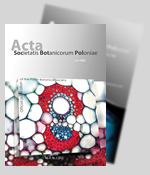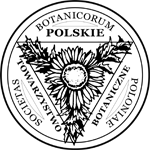ATR-FTIR-based fingerprinting of some Cucurbitaceae extracts: a preliminary study
Abstract
Keywords
Full Text:
PDFReferences
Dhiman K, Gupta A, Sharma DK, Gill NS, Goyal AA. Review on the medicinally important plants of the family Cucurbitaceae. Asian Journal of Clinical Nutrition. 2012;4:16–26. https://doi.org/10.3923/ajcn.2012.16.26
Guarrera PM. Traditional antihelmintic, antiparasitic and repellent uses of plants in Central Italy. J Ethnopharmacol. 2009;68:183–192. https://doi.org/10.1016/S0378-8741(99)00089-6
Stepek G, Buttle DJ, Duce IR, Behnke JM. Human gastrointestinal nematode infections: are new control methods required? Int J Exp Pathol. 2006;87:325–341. https://doi.org/10.1111/j.1365-2613.2006.00495.x
Taylor MA. A larval development test for the detection of anthelmintic resistance in nematodes of sheep. Res Vet Sci. 1990;49:198–202.
Sangster NC. Anthelmintic resistance: past, present and future. Int J Parasitol. 1999;29:115–124. https://doi.org/10.1016/S0020-7519(98)00188-X
World Health Organization. Research priorities for helminth infections. Technical report of the TDR disease reference group on helminth infections. Geneva: World Health Organization; 2012. (WHO Technical Report Series; vol 972).
Assessment report on Cucurbita pepo L., semen [Internet]. 2012 [cited 2018 May 28]. Available from: http://www.ema.europa.eu/docs/en_GB/document_library/
Herbal_-_HMPC_assessment_report/2013/03/WC500140759.pdf
Grzybek M, Kukula-Koch W, Strachecka A, Jaworska A, Phiri AM, Paleolog J, et al. Evaluation of anthelmintic activity and composition of pumpkin (Cucurbita pepo L.) seed extracts – in vitro and in vivo studies. Int J Mol Sci. 2016;17:1456. https://doi.org/10.3390/ijms17091456
Rodriguez-Saona LE, Allendorf ME. Use of FTIR for rapid authentication and detection of adulteration of food. Annu Rev Food Sci Technol. 2011;2:467–483. https://doi.org/10.1146/annurev-food-022510-133750
Paik S, Kwak HS, Park TH. A facile synthesis of(-)-cucurbitin. Bull Korean Chem Soc. 2000;21:131–132.
Elhadi IM, Koko SW, Dahab MM, El Imam JM, El Mageed MAE. Antigiardial activity of some Cucurbita species and Lagenaria siceraria. Journal of Forest Products and Industries. 2013;2:43–47.
Pineda-Alegría JA, Sánchez-Vázquez JE, González-Cortazar M, Zamilpa A, López-Arellano ME, Cuevas-Padilla EJ, et al. The edible mushroom Pleurotus djamor produces metabolites with lethal activity against the parasitic nematode Haemonchus contortus. J Med Food. 2017;20:1184–1192. https://doi.org/10.1089/jmf.2017.0031
Hirazawa N, Oshima SI, Mitsuboshi T, Hata K. The anthelmintic effect of medium-chain fatty acids against the monogenean Heterobothrium okamotoi in the tiger puffer Takifugu rubripes: evaluation of doses of caprylic acid at different water temperatures. Aquaculture. 2001;195:211–223. https://doi.org/10.1016/S0044-8486(00)00565-2
Rodriguez-Solana R, Daferera DJ, Mitsi C, Trigas P, Polissiou M, Tarantilis PA. Comparative chemotype determination of Lamiaceae plants by means of GC-MS, FT-IR, and dispersive-Raman spectroscopic techniques and GC-FID quantification. Ind Crops Prod. 2014;62:22–33. https://doi.org/10.1016/j.indcrop.2014.08.003
Moreira I, Scarminio IS. Chemometric discrimination of genetically modified Coffea arabica cultivars using spectroscopic and chromatographic fingerprints. Talanta. 2013;107:416–422. https://doi.org/10.1016/j.talanta.2013.01.053
Kharbach M, Kamal R, Bousrabat M, Mansouri MA, Barra I, Alaou K, et al. Characterization and classification of PGI Moroccan argan oils based on their FTIR fingerprints and chemical composition. Chemometr Intell Lab Syst. 2017;162:182–190. https://doi.org/10.1016/j.chemolab.2017.02.003
Jiménez-Carvelo AM, Osorio MT, Koidis A, González-Casado A, Cuadros-Rodríguez L. Chemometric classification and quantification of olive oil in blends with any edible vegetable oils using FTIR-ATR and Raman spectroscopy. LWT – Food Science and Technology. 2017;86:174–184. https://doi.org/10.1016/j.lwt.2017.07.050
DOI: https://doi.org/10.5586/asbp.3579
|
|
|








